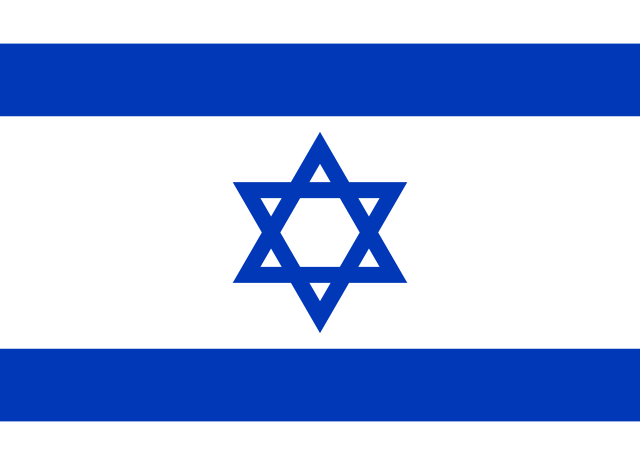Israel: Difference between revisions - Wikipedia
 Article Images
Article Images
Content deleted Content added
Tags: Reverted Visual edit |
|||
Line 108: Israel is located in a region known historically as [[Canaan]], [[Palestine (region)|Palestine]], and the [[Holy Land]]. In antiquity, it was home to Canaanite [[city-state]]s, then the [[History of ancient Israel and Judah|kingdoms of Israel and Judah]], and is referred to as the [[Land of Israel]] in [[Jewish culture|Jewish tradition]]. Situated at a [[Levantine corridor|continental crossroad]], the region was then ruled by [[History of Israel|various empires]].<ref name="auto">{{cite book |last=Gil |first=Moshe |url=https://books.google.com/books?id=M0wUKoMJeccC&dq=history+of+palestine+two+people&pg=PR13 |title=A History of Palestine, 634-1099 |publisher=Cambridge University Press |year=1992 |isbn=978-0-521-59984-9 |pages=14 |access-date=17 May 2024 |archive-url=https://web.archive.org/web/20240517102802/https://books.google.co.uk/books?hl=en&lr=&id=M0wUKoMJeccC&oi=fnd&pg=PR13&dq=history+of+palestine+two+people&ots=CMV1-8kJav&sig=C1Eh2oIUdicDWgg_Clo6yJgumUQ#v=onepage&q=history%20of%20palestine%20two%20people&f=false |archive-date=17 May 2024 |url-status=live}}</ref> Amid [[Antisemitism in Europe#19th and early 20th century|European antisemitism]], the late 19th century saw the rise of [[Zionism]], which sought a [[Homeland for the Jewish people|Jewish homeland]]. [[Occupied Enemy Territory Administration|British occupation]] led to the establishment of [[Mandatory Palestine]] in 1920. [[Aliyah|Jewish immigration]], combined with [[British foreign policy in the Middle East#Mandate for Palestine|British colonial policy]], led to [[Intercommunal conflict in Mandatory Palestine|intercommunal conflict]] between [[Jews]] and [[Arabs]].<ref>{{cite book |author= [[Benny Morris|Morris, Benny]] |title= Righteous Victims: A History of the Zionist-Arab Conflict, 1881–2001 |publisher= Knopf |year= 1999 |edition= reprint |isbn= 9780679744757 |pages= |quote= The fear of territorial displacement and dispossession was to be the chief motor of Arab antagonism to Zionism down to 1948 (and indeed after 1967 as well). |url= https://books.google.com/books?id=746mQgAACAAJ |access-date= 22 March 2024 |archive-date= 22 March 2024 |archive-url= https://web.archive.org/web/20240322131219/https://books.google.com/books?id=746mQgAACAAJ |url-status= live }} Also quoted, among many, by Mark M. Ayyash (2019). ''Hermeneutics of Violence: A Four-Dimensional Conception''. University of Toronto Press, p. [https://books.google.com/books?id=W1G_DwAAQBAJ&pg=PA195 195] {{Webarchive|url=https://web.archive.org/web/20240322131220/https://books.google.com/books?id=W1G_DwAAQBAJ&pg=PA195 |date=22 March 2024 }}, {{ISBN| 1487505868}}. Accessed 22 March 2024.</ref><ref>{{cite journal |last1=Fildis |first1=Ayse |last2=Nisanci |first2=Ensar |title=British Colonial Policy "Divide and Rule": Fanning Arab Rivalry in Palestine |year=2019 |journal=International Journal of Islamic and Civilizational Studies |volume=6 |issue=1 |publisher=UTM Press |url=https://d1wqtxts1xzle7.cloudfront.net/78420814/ea601a07a2310f41e37ea266a47b38107202-libre.pdf?1641751843=&response-content-disposition=inline%3B+filename%3DBritish_Colonial_Policy_Divide_and_Rule.pdf&Expires=1715344527&Signature=UEfPzsmbLIHNW7Sd0jLxe4OpYUu4sPt5cIaU2beASuCt0BXqpfOQmcXAcR9EAPzkenh~ohMRrZlUREfMTTfqEosnMw8oqlVa2Ap6HVteACMhsC0VpH~MUmjcYs8f8rQUrWjZTnMuKwhEtiRQ92Md~PThKvq6IbAds05mX-cJzPamGLZ7fpx8xA3ejpYDXiG1uYE7Ks550xBeDWLCCPkfuOUJXMTbmJAucKnXRZnDL78EuDeQx0CNpSWdujVlcd82klFyLverjL5AAJs5AH2eHNVpXzym0fPdbY2YJWz5sgMYZOC9oN09cDXB007r7qRj2nFSL3Zs13Un0i~~1~pwbg__&Key-Pair-Id=APKAJLOHF5GGSLRBV4ZA |access-date=10 May 2024 |archive-date=10 May 2024 |archive-url=https://web.archive.org/web/20240510121206/https://d1wqtxts1xzle7.cloudfront.net/78420814/ea601a07a2310f41e37ea266a47b38107202-libre.pdf?1641751843=&response-content-disposition=inline&%20filename=British_Colonial_Policy_Divide_and_Rule.pdf&Expires=1715344527&Signature=UEfPzsmbLIHNW7Sd0jLxe4OpYUu4sPt5cIaU2beASuCt0BXqpfOQmcXAcR9EAPzkenh~ohMRrZlUREfMTTfqEosnMw8oqlVa2Ap6HVteACMhsC0VpH~MUmjcYs8f8rQUrWjZTnMuKwhEtiRQ92Md~PThKvq6IbAds05mX-cJzPamGLZ7fpx8xA3ejpYDXiG1uYE7Ks550xBeDWLCCPkfuOUJXMTbmJAucKnXRZnDL78EuDeQx0CNpSWdujVlcd82klFyLverjL5AAJs5AH2eHNVpXzym0fPdbY2YJWz5sgMYZOC9oN09cDXB007r7qRj2nFSL3Zs13Un0i~~1~pwbg__&Key-Pair-Id=APKAJLOHF5GGSLRBV4ZA |url-status=live }}</ref> The 1947 [[United Nations Partition Plan for Palestine|UN Partition Plan]] triggered [[1947–1948 civil war in Mandatory Palestine|civil war]] between them. The State of Israel [[Israeli Declaration of Independence|declared its establishment]] on 14 May 1948. On 15 May 1948, the armies of neighboring Arab states invaded the area of the former Mandatory Palestine, internationalizing the civil war and beginning the The country has a [[parliamentary system]] elected by [[proportional representation]]. The [[Prime Minister of Israel|prime minister]] is head of [[Cabinet of Israel|government]], and elected by the [[Knesset]], a [[Unicameralism|unicameral legislature]].<ref name="cnn" /> Israel is the only country to have a [[revived language]], [[Modern Hebrew|Hebrew]], as the official language. The [[culture of Israel]] is composed of [[Jewish culture]] and [[Jewish diaspora]] influences, alongside elements of [[Arab citizens of Israel#Culture|Arab culture]], involving [[Israeli cuisine|cuisine]], [[Music of Israel|music]], and [[Visual arts in Israel|art]]. Israel has one of the biggest and most advanced [[List of countries by GDP (nominal)|economies in the Middle East]].<ref>{{Cite web |title=10 Largest economies in MENA |url=https://economymiddleeast.com/news/biggest-economies-mena/ |access-date=2024-04-05 |website=Economy Middle East |language=en-US |archive-date=5 April 2024 |archive-url=https://web.archive.org/web/20240405122235/https://economymiddleeast.com/news/biggest-economies-mena/ |url-status=live }}</ref><ref>{{Cite web |last=Getzoff |first=Marc |date=2023-08-09 |title=Most Technologically Advanced Countries In The World 2023 |url=https://gfmag.com/data/non-economic-data/most-advanced-countries-in-the-world/ |url-status=live |archive-url=https://web.archive.org/web/20231108044803/https://gfmag.com/data/non-economic-data/most-advanced-countries-in-the-world/ |archive-date=8 November 2023 |access-date=2023-11-08 |website=Global Finance Magazine |language=en-US}}</ref> It also has one of the highest [[GDP per capita]] as well as standards of living in the Middle East and Asia.<ref>{{Cite web |title=The world richest countries according three metrics |url=https://www.visualcapitalist.com/worlds-richest-countries-across-3-metrics/}}</ref><ref>{{Cite web |date=2023-09-09 |title=30 Wealthiest Countries by Per Capita Net Worth |url=https://finance.yahoo.com/news/30-wealthiest-countries-per-capita-111348314.html |access-date=2024-07-15 |website=Yahoo Finance |language=en-US}}</ref><ref>{{Cite web |date=2022-12-04 |title=Top 15 Most Advanced Countries in the World |url=https://finance.yahoo.com/news/top-15-most-advanced-countries-041038286.html |access-date=2023-10-27 |website=Yahoo Finance |language=en-US |archive-date=10 January 2023 |archive-url=https://web.archive.org/web/20230110012152/https://finance.yahoo.com/news/top-15-most-advanced-countries-041038286.html |url-status=live }}</ref> The country has been a member of the [[OECD|Organisation for Economic Co-operation and Development]] since 2010.<ref name="OECD">{{cite web |title=Israel's accession to the OECD |url=http://www.oecd.org/israel/israelsaccessiontotheoecd.htm |url-status=live |archive-url=https://web.archive.org/web/20200516012445/http://www.oecd.org/israel/israelsaccessiontotheoecd.htm |archive-date=16 May 2020 |access-date=12 August 2012 |website=oecd.org |publisher=OECD}}</ref><ref>{{Cite web |date=2010-05-27 |title=Israel to join prestigious OECD economic club |url=https://www.france24.com/en/20100527-israel-join-prestigious-oecd-economic-club-netanyahu-sarkozy-paris |url-status=live |archive-url=https://web.archive.org/web/20231123013723/https://www.france24.com/en/20100527-israel-join-prestigious-oecd-economic-club-netanyahu-sarkozy-paris |archive-date=23 November 2023 |access-date=2023-11-23 |website=France 24 |language=en}}</ref> | |||